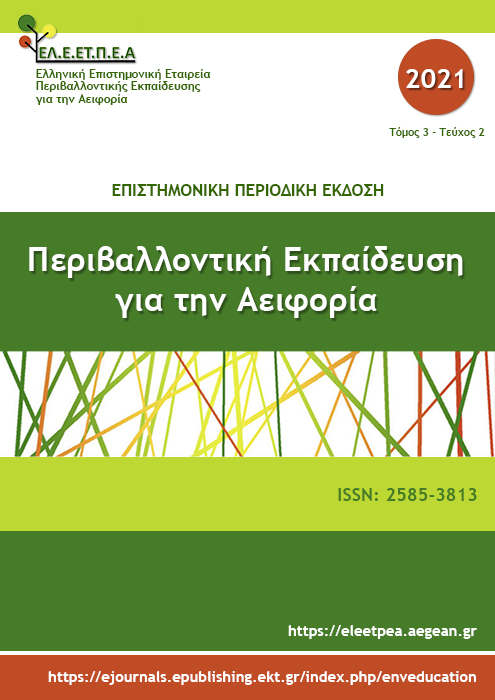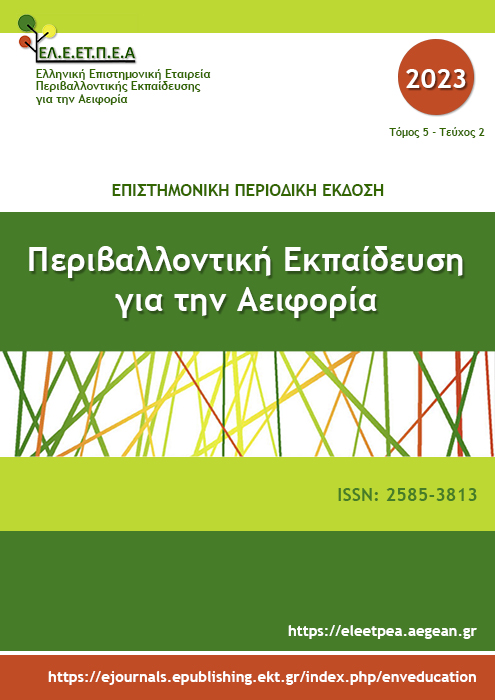Η “Αντίληψη του τόπου” στην Περιβαλλοντική Εκπαίδευση
Abstract
Η αντίληψη του τόπου (sense of place) είναι βασική έννοια στην βασισμένη στον τόπο εκπαίδευση (place-based education). Οι δύο της συνιστώσες, η σύνδεση των μαθητών με τον τόπο (place attachment) και η απόδοση οικολογικής σημασίας στον τόπο (ecological place meaning) μπορεί να είναι επιδιωκόμενο αποτέλεσμα της Περιβαλλοντικής Εκπαίδευσης. Στην παρούσα εργασία γίνεται βιβλιογραφική παρουσίαση της αντίληψης του τόπου και παρουσιάζονται εμπειρικά αποτελέσματα από την μέτρηση της σε δύο τμήματα, ελληνόφωνου και αγγλόφωνου, του σχολείου Ευρωπαϊκής Παιδείας Ηρακλείου στo πλαίσιο διδακτορικής έρευνας – δράσης. Για τη μέτρηση της αντίληψης του τόπου εφαρμόστηκε κλίμακα αξιολόγησης, πριν και μετά από πρόγραμμα Περιβαλλοντικής Εκπαίδευσης βασισμένης στον τόπο, με δράσεις στην αυλή του σχολείου και στην πόλη. Διαπιστώθηκε στατιστικά σημαντική διαφορά ως προς την αντίληψη του τόπου μεταξύ των μαθητών των δύο γλωσσικών τμημάτων πριν την παρέμβαση. Μετά την παρέμβαση διαπιστώθηκε στατιστικά σημαντική αύξηση της οικολογικής σημασία του τόπου και στα δύο τμήματα ενώ δεν ήταν στατιστικά σημαντική διαφοροποίηση της σύνδεσης με τον τόπο.
Article Details
- Come citare
-
Φιλιππάκη Α., & Καλαϊτζιδάκη Μ. (2022). Η “Αντίληψη του τόπου” στην Περιβαλλοντική Εκπαίδευση. Περιβαλλοντική Εκπαίδευση για την Αειφορία, 3(2), 49–64. https://doi.org/10.12681/ees.28166
- Sezione
- Articles

Questo lavoro è fornito con la licenza Creative Commons Attribuzione - Non commerciale - Condividi allo stesso modo 4.0 Internazionale.
Οι συγγραφείς διατηρούν τα πνευματικά δικαιώματα και παρέχουν στο περιοδικό το δικαίωμα της πρώτης δημοσίευσης μαζί με την αδειοδότηση της εργασίας με CC-BY-NC-SA, που επιτρέπει σε άλλους να μοιράζονται αυτή την εργασία με αναγνώριση του συγγραφικού δικαιώματος και την αρχική δημοσίευση σε αυτό το περιοδικό.



